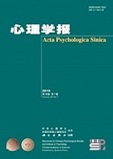|
|
The Chinese Indigenous Psychological Capital and Career Well-being
WU Wei-Jiong;LIU Yi;LU Hong;XIE Xue-Xian
2012, 44 (10):
1349-1370.
doi: 10.3724/SP.J.1041.2012.01349
The issue of career well-being has been widely concerned by scholars and managers. Previous studies clarify our understanding of career well-being by investigating the external factors such as income, job characteristics, stress, leaderships and so on. However, far too little attention has been paid to employees’ psychological resources. Psychological capital theory, which not only concerns about the organization's competitive advantage and employees’ performance but also emphasizes employees’ growth and development, and provides a fresh perspective on career well-being. Accumulating evidence suggests that employees’ psychological capital has positive impacts on good work attitudes and behaviors, well-being and performance. Some indigenous researches indicated that the indigenous psychological capital construct has two high-order factors, task-oriented psychological capital and guanxi-oriented psychological capital. It would be worthwhile to examine the eastern psychological capital theory in Chinese educational employee (i.e., teachers). Although there are a few empirical studies in China, those are mostly replications of western psychological capital structure. What is more, the mechanism between psychological capital and well-being is still mysterious. We need more indigenous studies to demonstrate the Chinese indigenous psychological capital and career well-being. The first purpose of this study is to develop a scale of indigenous psychological capital construct for Chinese educational employees. Several methods were taken to collect the measurement items of indigenous psychological capital scale, including observation, depth interview, literature review, and unstructured questionnaire survey. After that, we used item analysis, reliability analysis, factor analysis, and correlation analysis to test the reliability and validity of the developed scale. The results of 1566 Chinese teachers indicates that task-oriented psychological capital includes hope, optimism and resiliency, guanxi-oriented psychological capital consists of self-confidence/self-efficacy, emotion quotient/emotional intelligence, altruism, thanksgiving, and self-modesty. Indigenous psychological capital is significantly related with job performance, job satisfaction, occupational commitment and reward level. It also suggests that not only cultural differences, but also career differences should be taken into consideration when it comes to psychological capital measurement. A second purpose of this study is to model psychological capital effects on a full set of career well-being after controlling for the other processes known to be determinants of career well-being. Well-being was operationalized in terms of burnout, engagement, turnover intention and job satisfaction. A model of career well-being that does not account for these other processes (i.e., demographic, human capital, and organizational variables) may provide a biased estimate of the effect of psychological capital on career well-being. The third purpose of this study is to combine Chinese indigenous psychological capital theory with Job Demands–Resources Model and Conservation of Resource Theory. It proposes that: (1)there are two parallel processes involved in psychological capital effect career well-being, namely first energy process (i.e., indigenous PsyCap→burnout→ job satisfaction/turnover intention) and first motivation process (i.e., indigenous PsyCap → engagement → job satisfaction/turnover intention); (2)there are positive reciprocal process (i.e., gain spiral of engagement ↔ job satisfaction) and negative reciprocal process (i.e., loss spiral of burnout↔job satisfaction) between indicators of career well-being; (3)there are secondary energy process (i.e., indigenous PsyCap→burnout→loss spiral→burnout→turnover intention) and secondary motivation process (i.e., indigenous PsyCap→engagement→gain spiral→job satisfaction→ turnover intention) on the basis of well-being reciprocal processes and first energy and motivation processes. Structure equations modeling (SEM) was used to explore the relations among indigenous psychological capital and positive and negative indicators of career well-being, such as job satisfaction, turnover intention, job engagement, burnout. The data from 2280 Chinese teachers were randomly split into two parts. One part was submitted to an exploratory SEM and the other part was submitted to a confirmatory SEM. The results confirmed the existence of most processes, even though the guanxi-oriented PsyCap seems to be more prominent in China. More specifically, (1)positive reciprocal process were found between job satisfaction and work engagement(i.e., gain spiral); (2)task-oriented PsyCap effect career well-being only through first motivation process (i.e., task-oriented PsyCap→engagement→job satisfaction→turnover intention) and secondary motivation process (i.e., task-oriented PsyCap→engagement → gain spiral → turnover intention), and secondary energy process (i.e., task-oriented PsyCap→engagement→gain spiral→burnout→turnover intention); (3) guanxi-oriented PsyCap effect career well-being not only through first motivation process (i.e., guanxi -oriented PsyCap→engagement→job satisfaction→turnover intention; guanxi -oriented PsyCap→job satisfaction→ turnover intention) and secondary motivation process (i.e., guanxi-oriented PsyCap→job satisfaction/ engagement→gain spiral → turnover intention), but also through first energy process (i.e., guanxi-oriented PsyCap→burnout→turnover intention; guanxi-oriented PsyCap→job satisfaction→burnout→ turnover intention) and secondary energy process (i.e., guanxi-oriented PsyCap→job satisfaction/engagement→gain spiral→ burnout→turnover intention). The robustness of these findings is underscored by the fact that they were obtained in one half of the sample and cross-validated in the other half. Limitations and future research directions are discussed.
Related Articles |
Metrics
|




